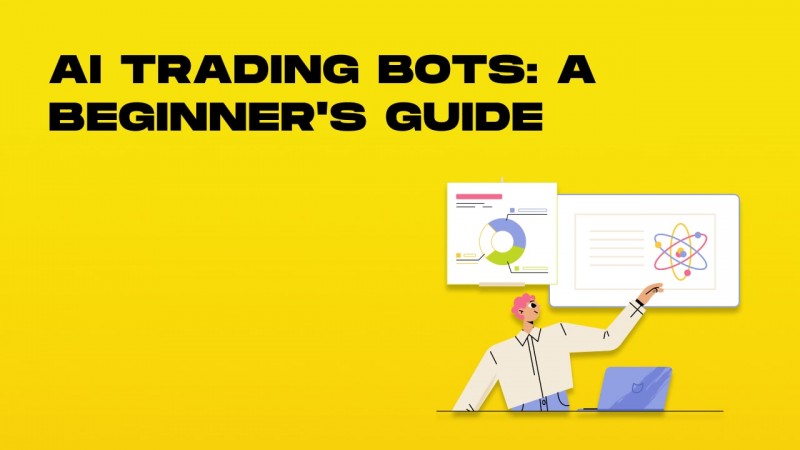When evaluating AI trading platforms compatibility and integration are crucial factors. A platform which seamlessly integrates with existing processes, tools and systems of your company can increase efficiency and productivity. We've compiled our top 10 tips on how to assess the compatibility and integration of these platforms.
1. Check Brokerage Integration
Check that your platform works seamlessly with the brokerage or trading service you would like to use.
Trade Execution: Determine if the platform allows direct trade execution by the broker integrated.
Account synchronization - Examine to see if the platform you are using is capable of syncing accounts' balances, transactions and positions in real time.
2. Assess the availability of APIs
API access is crucial Developers can utilize an API, also known as Application Programming Interface (API) to create their own software and automate their processes.
API documentation: Check to see if there are examples that clearly demonstrate how the API can be used.
Rate limits: Determine whether the API has acceptable rate limits and is able to handle your anticipated usage volume.
3. Evaluation of Integration Tools from Third Parties
Popular tools Check to see whether there is any integrations between the platform as well as tools such as Google Sheets, Excel, or trading robots.
Data export/import - Ensure that the platform supports easy data export/import to/from other tools.
Extensions/Plugins: Check if the platform can support extensions or plugins to add functionality.
4. Test Compatibility for Operating Systems
Desktop compatibility: Ensure that the platform is compatible with the operating system of choice (Windows, macOS or Linux).
Mobile compatibility - Look to see if a platform comes with a mobile version that is compatible with iOS as well as Android.
Web-based Access: Determine if you are able to access the platform through a browser to increase flexibility.
5. Analyze Data Integration Capabilities
Data sources: Ensure the platform integrates with multiple data sources (e.g. market data providers, news feeds, social media sentiment).
Real-time feeds of data Verify that the platform allows for real-time integration of data to offer up-to-date analysis.
Import historical data: Check if the platform allows importing historical data to backtest or analysis.
6. Cloud and On Premise Compatibility
Cloud-based Platforms: The platform should be accessible from anywhere with an internet connection.
On-premise solutions: If prefer on-premise deployment, confirm that the platform you are using supports it.
Check the hybrid model. It is a hybrid model that combines on-premise and cloud capabilities.
7. Check for Cross Platform Syncronization
Device synchronization. Check that data and settings are synced across all platforms (desktops mobiles, tablets).
Verify whether changes made on the device immediately reflect on another.
Check the platform to see whether it permits access to data or functions when you're offline.
8. Assessment of the degree of compatibility with trading strategies
Algorithmic trading - Ensure that the trading platform you choose is compatible with automated or algorithms-based trading strategies.
Custom indicators - Make sure to check if the platform permits the use or customized technical indicators and scripts.
Strategy backtesting. Find out if the platform allows backtesting strategies based on historical data.
9. Review Security and Compliance
Data encryption: Ensure the platform uses encryption for data in transit and in rest.
Authentication: Check that the platform is authenticated methods that are secure (e.g. two-factor authentication).
Check for regulatory compliance: Make sure that the platform meets the relevant regulations (e.g. GDPR, FINRA or SEC).
10. Test Scalability and Performance
Scalability is crucial. The platform needs to be able handle the growing volume of data and the increasing number of users.
Performance during load: Verify whether the platform performs as expected under high-volatility conditions.
Resource usage - Check that the platform effectively uses system resources like CPU, memory or bandwidth.
Bonus Tips
Users' feedback: Look for testimonials and reviews from users when you are evaluating the site.
Trial period: Take advantage of a no-cost trial or demo to discover how the platform integrates with other processes and tools.
Customer Support: The platform should provide solid support in the event of integration issues.
These tips will help you assess the compatibility and integration of AI stock-predicting/analyzing trading platforms. This will help ensure that they integrate seamlessly with your current platforms and boost the efficiency of your trading. Check out the best chart ai trading assistant for blog tips including ai for investing, ai investing platform, trading with ai, ai for stock trading, ai investment platform, best ai trading app, ai stock picker, ai stock trading, ai trade, ai stocks and more.

Top 10 Tips On Assessing The Updates And Maintenance Of Ai Stock Predicting/Analyzing Trading Platforms
Assessing the updates and maintenance of AI-driven trading and stock prediction platforms is critical to ensure they are secure, efficient and in tune with the changing market conditions. These are the top 10 tips for evaluating update and maintenance procedures:
1. Updates will be provided frequently.
Tip: Determine how often your platform updates (e.g. monthly, quarterly, weekly).
Regular updates demonstrate active improvement of the product and the ability to adapt to market developments.
2. Transparency of Release Notes in Release Notes
Check out the notes included in the platform's Release Notes to find out what improvements and modifications have been implemented.
Why: Transparent release notes reflect the platform's commitment to continuous improvements.
3. AI Model Retraining Schedule
Tip: Find out how often AI models are retrained by using fresh data.
The reason: Models need to evolve to be accurate and current as market dynamics change.
4. Bug Fixes, Issue Resolution
Tip: Assess how quickly the platform addresses technical issues or bugs identified by users.
Reasons: Fast bug fixes can ensure the reliability of the platform and its functionality.
5. Updates to Security
Tip: Check if the platform is updating its security protocols on a regular basis to ensure the security of data of customers and trades.
Why: Cybersecurity is a crucial aspect of financial platforms. It helps to protect against breaches and fraud.
6. Integration of New Features
Tips: Find out whether the platform has introduced new features (e.g. advanced analytics, or new data sources) based on user feedback or market trends.
The reason: Feature updates show the ability to innovate and respond to the needs of users.
7. Backward Compatibility
Verify that the latest updates will not affect the functionality of your current system, or require significant reconfiguration.
Why? Backward compatibility is crucial to ensure smooth user interface transitions.
8. User Communication during Maintenance
Check out how your platform informs users of scheduled maintenance and downtime.
Why? Clear communication builds trust and minimizes disruptions.
9. Performance Monitoring & Optimization
Tips: Make sure that the platform is continuously monitoring the performance indicators (e.g. latency, latency and accuracy) and then optimizes its system.
The reason: Continuous optimization of the platform ensures it remains functional and expandable.
10. Conformity to Regulatory Changes
Tip: Check to see if your platform is updated with the most recent technology, policies, and laws regarding data privacy or new financial regulations.
Why: Conformity with the regulatory requirements is essential to ensure the trust of users and to reduce legal risk.
Bonus Tip: User Feedback Integration
Find out if the platform incorporates user feedback into its updates and maintenance processes. This indicates a focus on the customer to improve.
By evaluating these aspects by evaluating these aspects, you can be sure that the AI stock prediction and trading platform you select is maintained up-to-date and capable of adapting to market dynamics that change. Follow the most popular ai options trading examples for website advice including ai stock prediction, ai stock trader, ai in stock market, ai options, how to use ai for copyright trading, ai stock predictions, stock predictor, ai share trading, best ai trading platform, trading ai tool and more.
